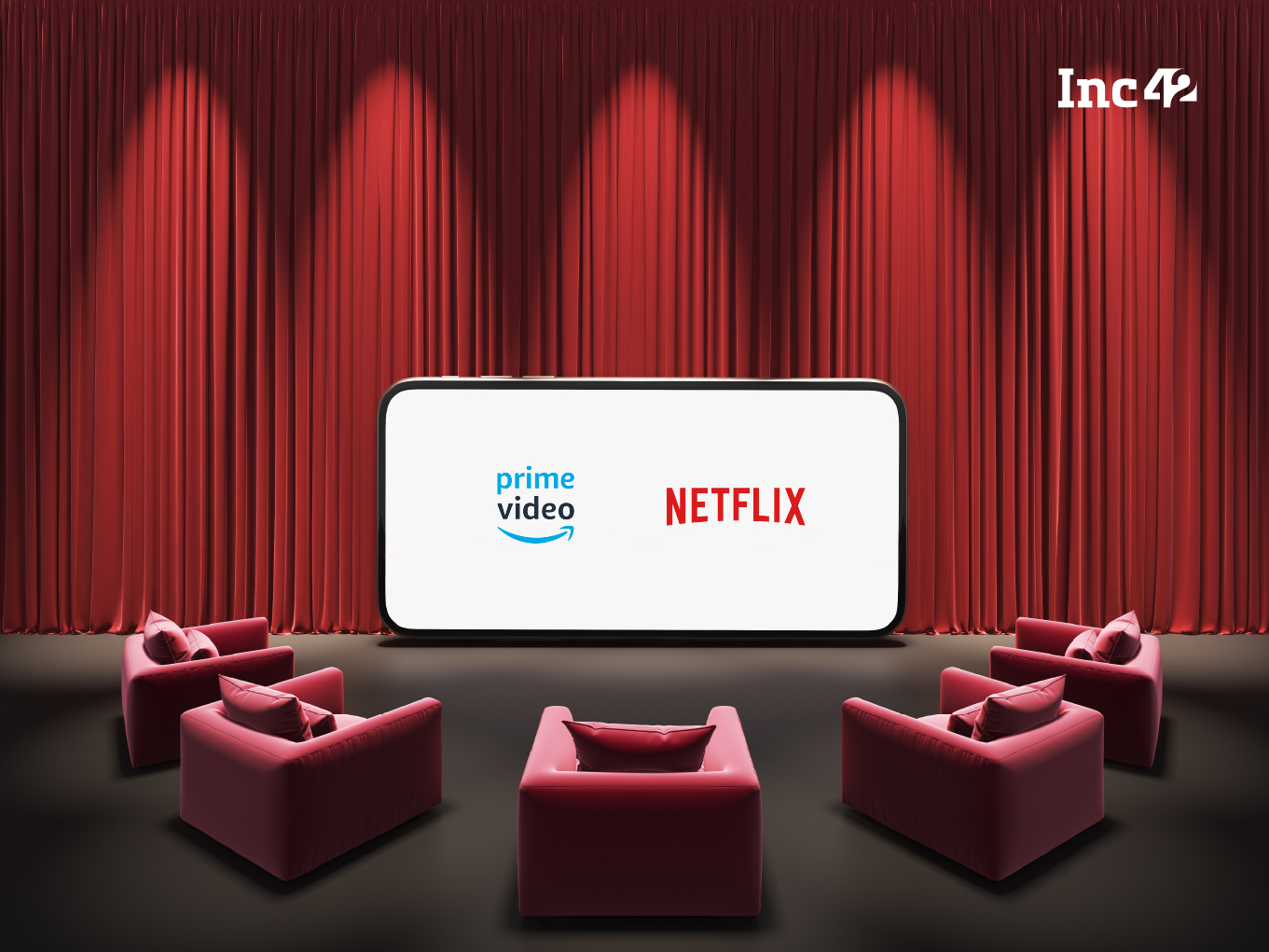OTTs committed to differently abled viewers’ accessibility: Industry body

OTTs committed to differently abled viewers’ accessibility: Industry body
The Indian Digital Media Industry Foundation (IDMIF) has reaffirmed its dedication to upholding accessibility standards to cater to the needs of people with disabilities, ensuring their ability to fully enjoy the content produced by Over-The-Top (OTT) platforms.
In a commendable move, IDMIF has underscored the importance of inclusivity in the digital media landscape. Accessibility standards are crucial to ensuring that individuals with disabilities, including those with visual or hearing impairments, can access and engage with online content seamlessly.
As the digital media industry continues to expand, the reach of OTT platforms has grown significantly. These platforms offer a wide range of content, including movies, series, and streaming services. However, it’s vital that this content is accessible to all individuals, irrespective of their physical abilities. 
IDMIF’s commitment to accessibility standards is a commendable step towards making digital media more inclusive. This includes features such as closed captions for the hearing-impaired and audio descriptions for the visually impaired. These features enhance the overall viewing experience for people with disabilities, ensuring that they can fully comprehend and enjoy the content.
Furthermore, prioritizing accessibility aligns with global efforts to promote inclusivity and diversity in media and entertainment. By adhering to these standards, IDMIF and OTT platforms not only fulfill their ethical responsibilities but also tap into a broader audience base.
IDMIF’s statement, issued through the Digital Media Content Regulatory Council (DMCRC), which serves as a self-regulatory body for Over-The-Top (OTT) platforms, is in direct response to the Ministry of Information and Broadcasting’s invitation for input concerning the establishment of accessibility standards aimed at benefiting differently-abled viewers.
The Ministry of Information and Broadcasting’s call for insights demonstrates the government’s proactive approach toward ensuring that individuals with disabilities have equal access to digital media content. This initiative seeks to develop comprehensive guidelines that will make OTT content more accessible to differently-abled individuals.
IDMIF, through DMCRC, has taken a commendable step by affirming its commitment to these accessibility standards. By doing so, it aligns with the government’s efforts and emphasizes the industry’s responsibility to provide inclusive and accessible digital content.
The collaborative effort between government agencies and self-regulatory bodies like DMCRC highlights the importance of addressing accessibility challenges in the digital media landscape collectively. The ultimate goal is to create a more inclusive and equitable environment where all viewers, regardless of their abilities, can enjoy the diverse array of content offered by OTT platforms.
In summary, IDMIF’s response to the Ministry of Information and Broadcasting’s call for input signifies a positive collaboration between industry stakeholders and government authorities in the pursuit of accessibility standards for differently-abled viewers. This collaborative effort aims to ensure that digital media content becomes more accessible and enjoyable for a wider and more diverse audience.
IDMIF, a consortium that includes prominent services like Disney+ Hotstar, Zee5, Voot, and SonyLIV, among others, has highlighted its commitment to enhancing accessibility in the digital media landscape. The member organizations within IDMIF have been actively taking several measures to promote accessibility for a diverse audience. 
These initiatives include the provision of subtitles for a majority of the content offered, ensuring that textual representation of dialogues is available. Additionally, IDMIF members have been working towards expanding their closed captioning (CC) offerings, which not only include text for dialogues but also descriptions of other sounds within a scene. This comprehensive approach enhances the viewing experience for individuals with hearing impairments, allowing them to fully comprehend and engage with the content.
Moreover, certain IDMIF members go a step further by providing audio descriptors (AD), which enable viewers to hear descriptions of what is happening on screen in addition to the dialogue. This feature is particularly valuable for individuals with visual impairments, as it provides them with a more immersive and inclusive viewing experience.
These efforts by IDMIF members underscore their commitment to making digital media content accessible to all, regardless of physical abilities. By offering a range of accessibility features, they ensure that their platforms are inclusive and welcoming to a broad audience.
In conclusion, IDMIF, through its member organizations, is actively engaged in initiatives to enhance accessibility in the digital media space. These efforts encompass various accessibility features, including subtitles, closed captioning, and audio descriptors, with the goal of providing a more inclusive and enjoyable viewing experience for all viewers, including those with disabilities.
Several of the platforms within IDMIF have introduced innovative accessibility features to enhance the user experience for individuals with disabilities. One such feature is the text control option, which enables users on mobile applications to resize text by up to 200% without affecting the functionality of the platform. This empowers users to customize text size according to their preferences, making content more readable and accessible.
Additionally, some platforms are actively working to provide screen reader support. This functionality allows users to have text displayed on the screen read aloud to them, facilitating basic navigation of the platform. Screen reader support is particularly valuable for individuals with visual impairments, as it enables them to interact with digital content more effectively.
While these initiatives showcase a commitment to accessibility, it’s essential to acknowledge that there are challenges in implementing accessibility measures, particularly for live content and archival or licensed content. Technological constraints may pose difficulties in ensuring real-time accessibility for live content. Similarly, issues related to rights and licensing agreements can create hurdles when making archival or licensed content accessible.
Despite these challenges, IDMIF members have affirmed their support for the Ministry of Information and Broadcasting’s (MIB) objective of enhancing accessibility. They have also emphasized their commitment to providing accessibility in accordance with the Code of Ethics outlined under the IT Rules. This commitment underscores the industry’s dedication to fostering inclusivity and ensuring that digital media content is accessible to all viewers, regardless of their abilities or disabilities.
In a letter addressed to the Ministry of Information and Broadcasting (MIB), the members of the Indian Digital Media Industry Foundation (IDMIF) have made a reasonable and practical request regarding the proposed Accessibility Standards for Online Curated Content Providers (OCCPs).
Recognizing that OCCPs are still evolving as an industry and that there may be challenges in implementing accessibility standards across the board, the members have advised the MIB to consider a phased approach to compliance. They suggest that the proposed Accessibility Standards should provide a reasonable timeline for the industry to adapt and prepare for full compliance.
The members acknowledge that while the necessary technology may be available, the practical implementation of accessibility features could require support and time from both the industry and the regulatory authorities. They highlight the potential scarcity of service providers capable of rendering accessibility services and the need for the industry to build the necessary infrastructure to meet accessibility requirements effectively.
In light of these considerations, the members recommend that the MIB issue Accessibility Standards in the form of guidelines that allow for a gradual integration of accessibility features in content. This phased and graded approach would enable the industry to work toward compliance at a pace that is both practical and realistic.
Overall, this request from IDMIF members reflects a collaborative and pragmatic approach to ensuring accessibility in digital media content. It acknowledges the industry’s willingness to adapt and make content accessible while recognizing the need for a balanced and feasible timeline to achieve these goals.
IDMIF, the Indian Digital Media Industry Foundation, operates as a subsidiary of the Indian Broadcasting and Digital Foundation (IBDF). IDMIF is primarily responsible for representing leading online content curation platforms and actively engages in policy advocacy and content regulation through the Digital Media Content Regulatory Council (DMCRC). 
The Indian Broadcasting and Digital Foundation (IBDF) serves as the parent organization, while IDMIF focuses on specific initiatives related to the digital media industry, particularly online content curation platforms. DMCRC, under the purview of IDMIF, plays a crucial role in regulating content and ensuring adherence to ethical standards within the digital media landscape.
Together, these entities work collaboratively to address industry challenges, promote responsible content practices, and advocate for policies that enhance the digital media ecosystem in India. IDMIF’s commitment to accessibility standards and its engagement with regulatory bodies like the Ministry of Information and Broadcasting underscore its role in shaping the future of digital media in the country.


